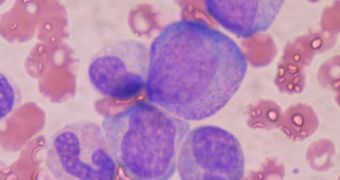Scientists from the University of Pennsylvania worked closely together with colleagues from the Université de Strasbourg, the Lawrence Berkeley National Laboratory and the University of California in San Francisco (UCSF) to conduct a new study, which revealed for the first time how blood stem cells endure in the human body for decades.
These cells are responsible for producing daughter cells that eventually form red and white blood cells, as well as platelets. However, these daughter cells need to be formed at a rate of around 1 million per second in order to meet the body's demands, and they live only for several hours to several weeks.
For a long time, experts have wondered how their precursors, the blood stem cells, were able to survive without failing for an entire human lifespan. The secret was found to lie in a motor protein that regularly plays a role in muscle contractions. This tiny molecule, myosin IIB, made all the difference for these cells.
Whenever the blood stem cells need to create daughters, this protein makes them contract unevenly and asymmetrically. Basically, more than half of the progenitor cell can remain a stem cell, while the other goes on to form a daughter, which then goes on to differentiate into yet another type of cell, Science Blog reports.

 14 DAY TRIAL //
14 DAY TRIAL //